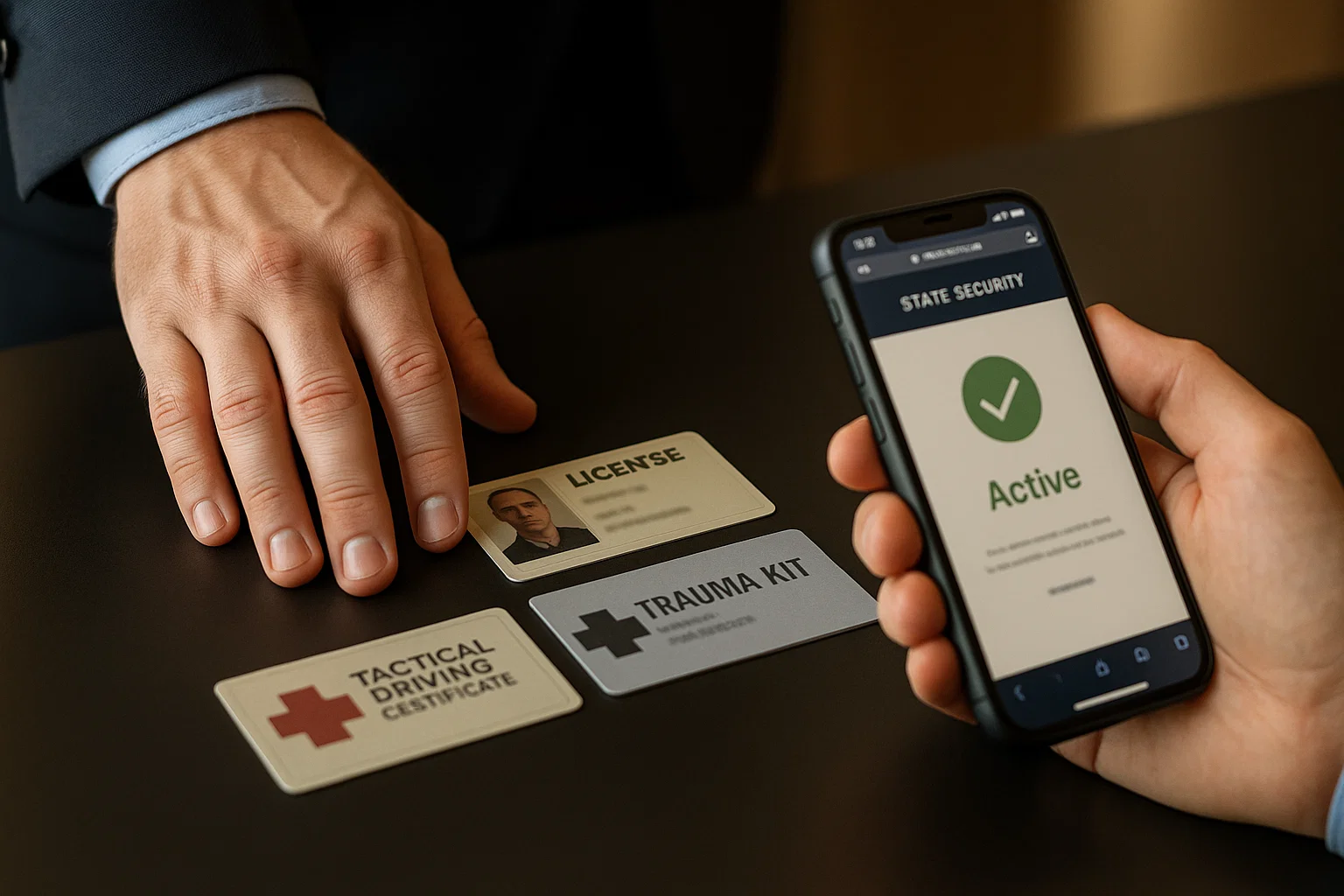Flying private is only half the battle. The real test starts at wheels down. Here is a tight sixty minute playbook that shows how a well drilled protection team moves a client from the jet stairs to a secure address without breaking a sweat or a schedule. Use it to measure any outfit you hire.
Minute 0 – Cabin Clearance
Pilots cut engines. Guard One steps inside the cabin before anyone else leaves a seat. He checks the aisle, the service door, and the ground crew below. The client hears one clear line on the earpiece: “Steps are secure. Moving.” Calm voice, no chatter, keeps adrenaline down and focus up.
Minutes 1 to 3 – Stairs and Shield
Guard Two stands halfway down the stairs blocking long lens shots from the perimeter fence. Guard Three positions at the bottom with a clear sight line to the convoy. The client exits at a steady pace, never rushed yet never exposed for more than eight seconds. A spare umbrella covers the crown of the head if rain or drones hover.
Minutes 4 to 7 – Passport Fast Track
A mobile customs team meets at the apron gate. Documents were pre scanned hours earlier so stamps take forty seconds per passport. Guard One watches hands, faces, and scanners for weird tells. If a stamp machine jams there is a portable seal kit ready. The client never feels the stall.
Minutes 8 to 12 – Baggage Hand-off
Ground staff load luggage into the lead SUV. Guard Two checks each tag and reads back counts over comms. A tracker the size of a postage stamp goes on the final bag. If a piece misses the convoy an alert pings phones within sixty seconds. No guessing. No lost gear.
Minutes 13 to 20 – Convoy Rollout
Driver One pulls from the apron lane into a service road that avoids the main terminal loop. Guard Three rides in the scout car two hundred meters ahead feeding live traffic and protest data. If the map flashes red the route flips to Plan B in two taps. The client notices none of it. They see only a smooth glide through side gates.
Minutes 21 to 32 – City Entry
Urban edges are where most deals fall apart. Guard One watches bridges, on-ramps, and tall vehicles while Driver One keeps a two second gap for evasive space. Windows stay clear so a passing camera finds no reflection of fear. The convoy blends with commuter traffic yet remains a single moving shield.
Minutes 33 to 38 – Secure Fuel Stop
Scout car circles the pre-cleared station. Guard Two exits first, scans pump island, and gives a simple thumbs up. Fuel cap clicks at forty liters a minute. Client stays seated, doors locked, air con on. Total stop time is four minutes ten seconds. Quick sip of water, back on route.
Minutes 39 to 47 – Last Mile Switch
As the convoy nears the safe house perimeter a decoy SUV peels off and draws any tail. Main car turns into a service alley then backs through a controlled gate. This reverse entry means no idle time nose to street and engine power remains live for instant exit if needed.
Minutes 48 to 52 – House Sweep
Advance team checked the address one hour earlier and rechecks every room radio in hand. Guard Three walks the client inside and stays within an arm’s reach. Bags hit the foyer within two minutes. Wi Fi key, bottled water, fresh towel. Comfort sends cortisol crashing and keeps decision skills sharp.
Minutes 53 to 60 – Ops Desk Lockdown
Driver One parks the SUV nose out with half a tank for later moves. Scout car joins after clearing the decoy route. All guards upload body cam clips and vehicle GPS logs to cloud storage. The ops desk flags three minor route tweaks for the ride back out in the morning. Client gets a single text: “Secure. Call us when ready.” That is the only proof they need.
Why This Matters
A timeline like this turns vague promises into measurable checkpoints. It proves your team planned the route, trained for glitches, and wrapped every minute in accountability. Hand this to any provider and ask where their gaps sit. If their answers drift, call us. We already live these sixty minutes every day.



